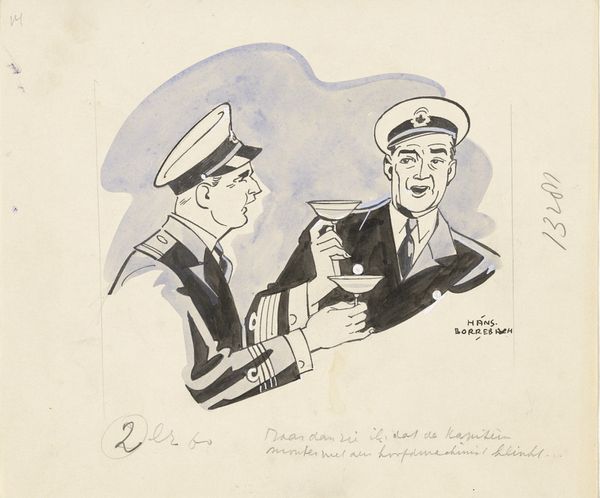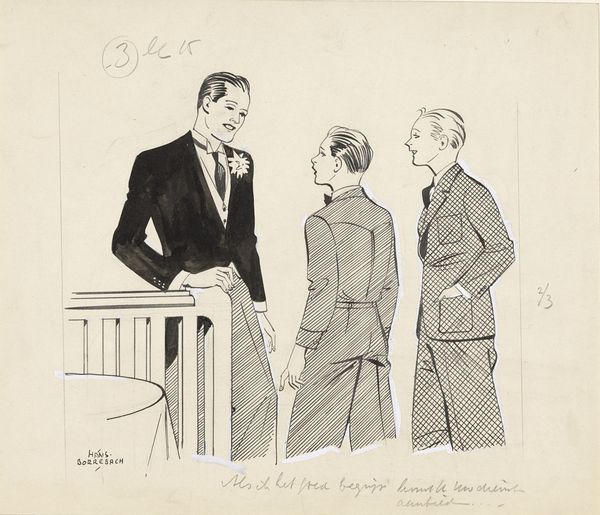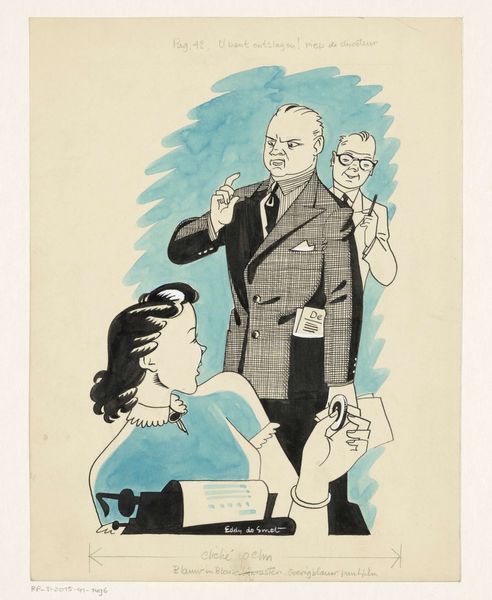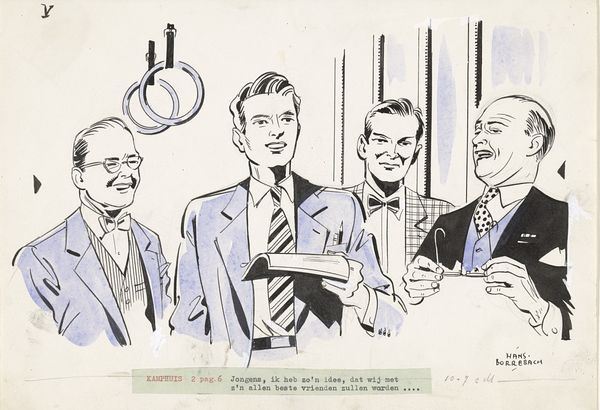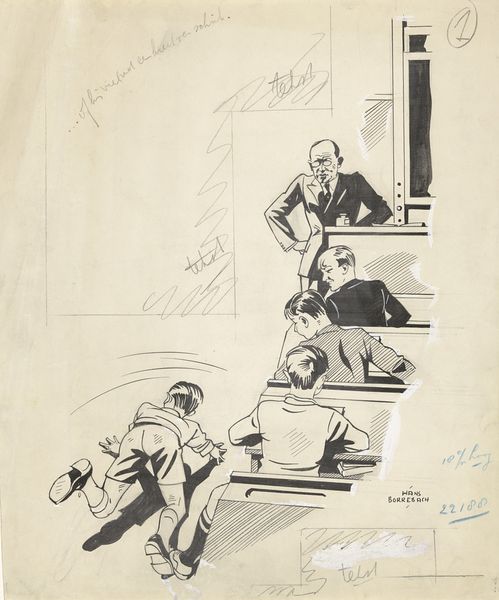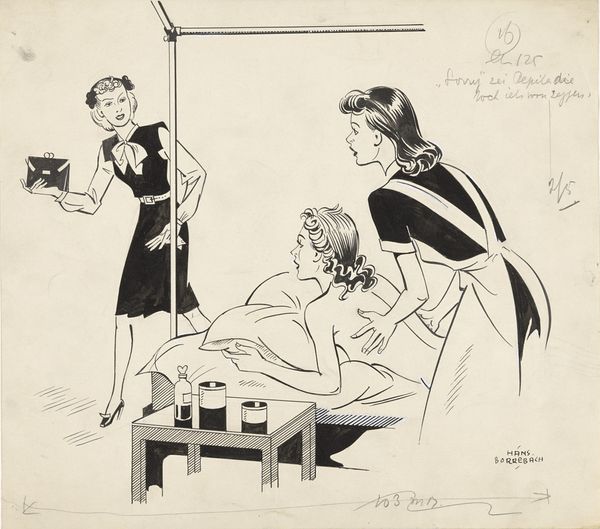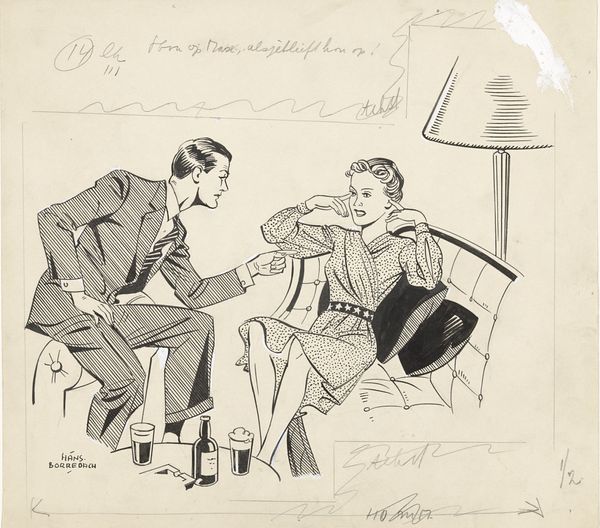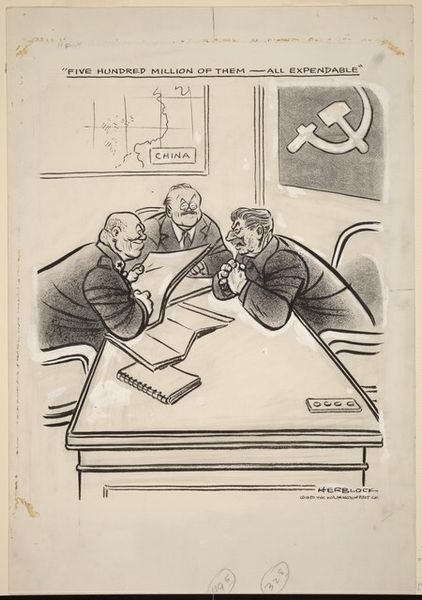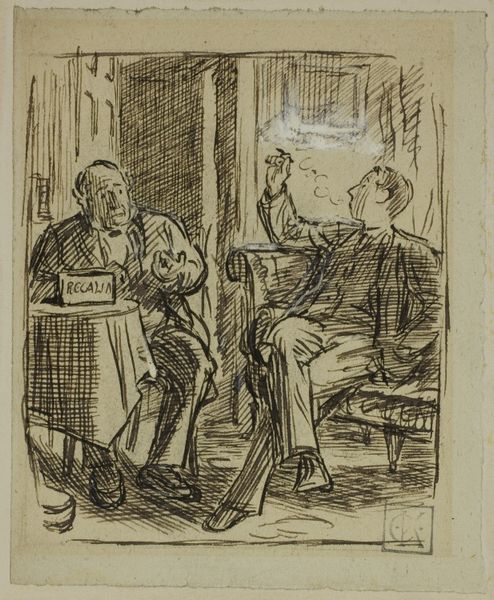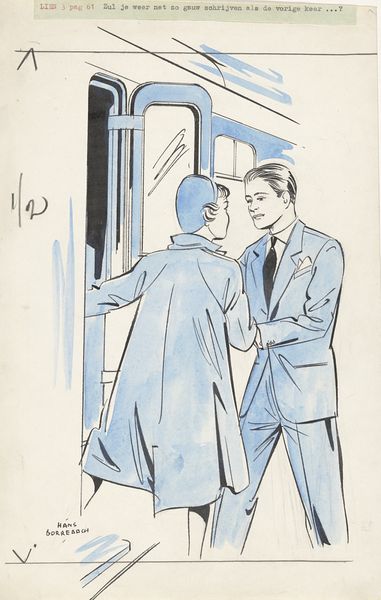
drawing, ink
#
drawing
#
narrative-art
#
figuration
#
ink
#
genre-painting
#
modernism
Dimensions: height 187 mm, width 257 mm
Copyright: Rijks Museum: Open Domain
Curator: This drawing, "Jongen biedt twee pakketten aan aan een man achter een bureau," created before 1945 by Hans Borrebach using ink on paper, is interesting, isn't it? The narrative scene feels charged with some unspoken tension. What strikes you about it? Editor: Well, first of all, the men’s clothing catches my eye. Everyone looks so neat and tidy! Also, it reminds me of old comics I’ve read. How would you describe the historical or social context that might have led Borrebach to make something like this? Curator: The materials and methods point to mass media of the time. Consider the ink itself—what type was available and how did its qualities influence the stark black and white aesthetic we see here? Also think about the process involved in mass production. Editor: It is kind of stark… And, if it’s made of ink, why did the artist choose the particular type of ink over, for instance, another medium like charcoal, pencil or graphite? Curator: Precisely! Ink allowed for sharp, reproducible lines which were essential for printed images, suggesting this might have been intended for a publication. We should also consider how this image relates to genre painting. Does it glorify work, satirize it, or merely depict it? How does this potentially play with existing class structures? Editor: That is a great point! And thinking about the class dynamic makes it easier to grasp how viewers, specifically those encountering genre painting within the art world, engaged with those pieces. Curator: Exactly. The value isn’t simply in what’s depicted, but also in how the materials and intended mode of dissemination informed the piece’s engagement with contemporary culture and power structures. What's more, it demonstrates a shift to new methods and styles that break with traditional boundaries in art production. Editor: So it sounds like analyzing art through a material lens makes it more clear to perceive the value within our society, the dynamics of power and labour involved in both making and circulating artwork. Thank you! Curator: Glad to share the point of view.
Comments
No comments
Be the first to comment and join the conversation on the ultimate creative platform.
